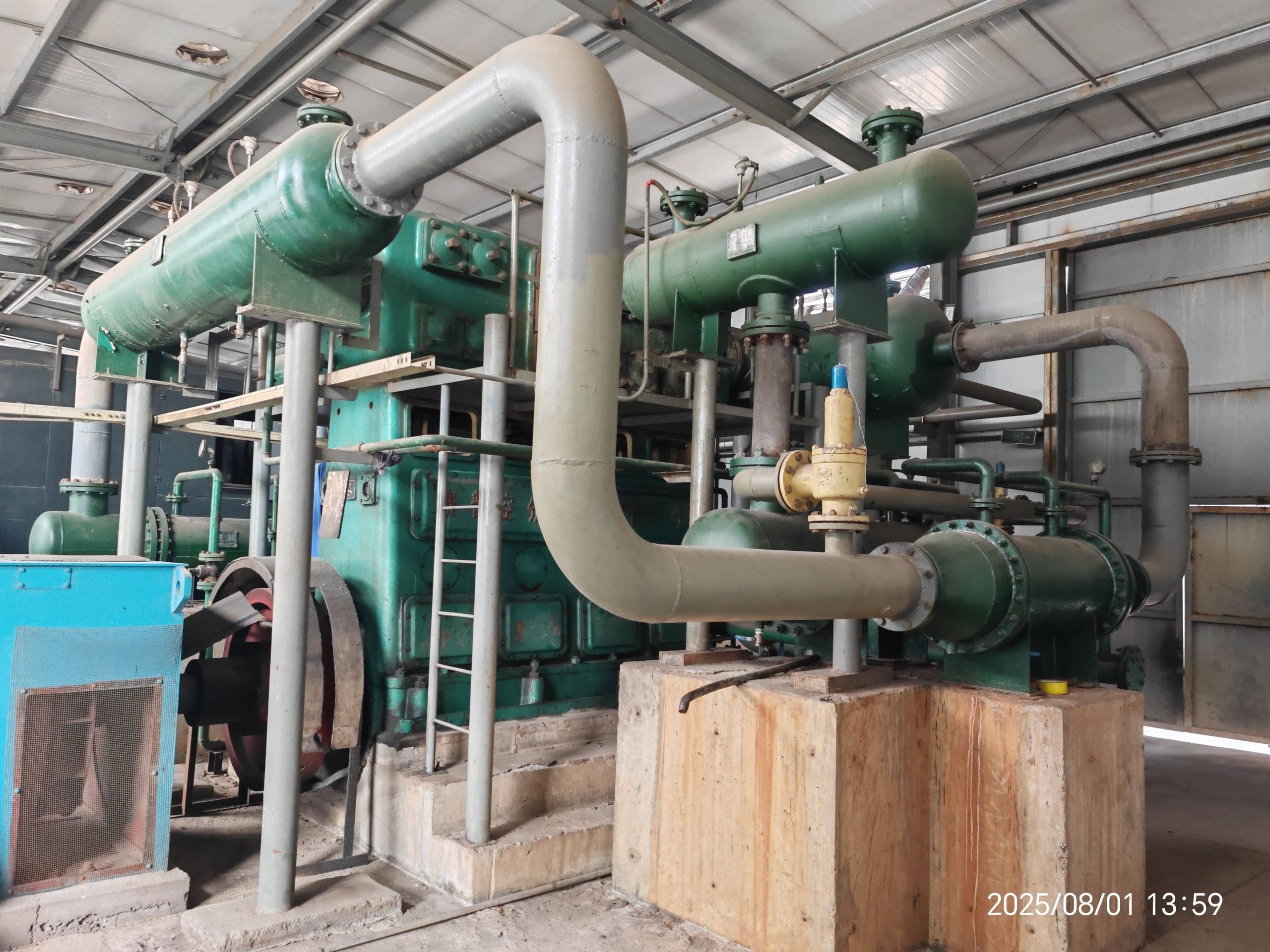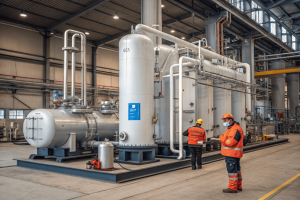What is a CO₂ recovery system and how does it work?
•
What is a CO₂ recovery system and how does it work?
Are you watching valuable CO₂ vent from your facility? This common practice wastes a reusable resource and contributes to unnecessary emissions. You need a way to capture it.
A CO₂ recovery system captures carbon dioxide gas from your process, purifies it, and turns it into a liquid. It works by compressing the gas, filtering out impurities, and cooling it down until it liquefies, making it ready for storage and reuse.

As an engineer at FTL Machine, I've designed and installed these systems in many different facilities. They are more than just an environmental add-on; they are an integrated part of a smart, efficient production line. The magic is in the details of how the gas is captured, cleaned, and converted into a usable product.
How is CO₂ captured and purified in industrial processes?
Raw CO₂ gas from your process is full of impurities. Using it directly can contaminate your products and damage your equipment, creating a much bigger problem.
CO₂ is captured from a source, like a fermentation tank, and is purified in multiple stages. A water scrubber removes soluble impurities, an activated carbon filter absorbs odors, and a dryer removes all remaining moisture before the gas is turned into a liquid.

I always tell my clients that the purification section is the heart of the recovery system. Getting this part right is crucial for producing high-quality, food-grade CO₂. The process is a logical sequence of steps designed to remove specific contaminants one by one.
The Journey from Raw Gas to Pure Liquid
It all starts with collecting the raw gas, often in a large balloon or gas holder to buffer the flow. From there, it begins its cleaning journey.
- Compression: The gas first goes to a compressor. This increases its pressure, making it easier to handle and purify in the following steps.
- Water Scrubber: The pressurized gas bubbles through a water tower. This simple step "scrubs" the gas, removing any water-soluble impurities like certain types of alcohol.
- Carbon Tower: Next, it passes through a vessel filled with activated carbon. This material has a huge surface area that traps volatile organic compounds (VOCs) and other substances that can cause off-flavors or odors.
- Drying: Finally, the gas goes through a dryer, which contains a desiccant material. This removes the final traces of water vapor. Removing moisture is critical to prevent ice from forming and blocking the system in the cold liquefaction stage.
What technologies are used in carbon dioxide recovery equipment?
You might think a recovery system is just one big machine. A system is actually made of many specialized components, and a weak link can compromise the entire operation.
The core technologies are gas compressors, multi-stage purification vessels, heat exchangers, and a refrigeration unit for liquefaction. A central Programmable Logic Controller (PLC) automates and monitors these components, ensuring they work together efficiently and safely.

When I design a system, I am selecting and integrating these core technologies to meet the client's specific needs. The type of compressor we choose or the refrigerant we use depends entirely on the gas source and the desired final product. It is all about building a balanced and reliable system.
A Look at the Core Components
Each piece of equipment has a specific job to do. Understanding their roles helps you appreciate how the whole system functions as a single unit.
| Technology | Role in the System | Why It's Important |
|---|---|---|
| Compressor | Increases the pressure of the raw CO₂ gas. | High pressure is needed for efficient purification and liquefaction. |
| Purification System | Includes scrubbers, filters, and dryers to remove contaminants. | Ensures the final liquid CO₂ meets high-purity standards. |
| Refrigeration Unit | Cools the purified CO₂ gas until it condenses into a liquid (liquefaction). | Liquid CO₂ is dense and much easier to store than gas. |
| PLC Control System | The "brain" of the unit that automates the process and monitors for safety. | Provides reliable, hands-free operation and optimizes energy use. |
How can CO₂ recycling systems improve energy efficiency and reduce emissions?
You know these systems reduce emissions by capturing CO₂. But you might worry that the system itself will use a lot of energy, simply trading one problem for another.
CO₂ recycling systems improve efficiency by creating a closed loop. This removes the need for fuel-intensive truck deliveries of purchased CO₂. Modern systems also use heat recovery to capture waste heat from the process and use it elsewhere in your facility.

This is one of the most rewarding parts of my job. We are not just helping clients become more sustainable; we are helping them build a smarter, more integrated facility that wastes less of everything, including energy. The benefits go far beyond the CO₂ itself.
The Double Benefit: Less Waste, Less Energy
First, let's talk about emissions. You get a direct reduction by not venting CO₂ into the atmosphere. You also get an indirect reduction by eliminating the trucks that deliver your CO₂. I had one client who was able to remove over 50 truck deliveries per year from their carbon footprint. That's a significant impact on their Scope 3 emissions.
Second, the energy efficiency gains are very real. The refrigeration and compression processes generate a lot of heat. Instead of just blowing this hot air outside, we can capture it. We use heat exchangers to transfer that thermal energy to water. This hot water can then be used for cleaning, in boilers, or for other plant processes. This reduces the amount of extra fuel you need to burn to make hot water. This "heat integration" turns a waste product (heat) into a valuable resource, lowering the overall energy consumption of the entire plant.
Conclusion
A CO₂ recovery system is a complete solution. It uses proven technologies to capture, purify, and recycle CO₂, cutting your emissions, reducing costs, and improving your overall energy efficiency.
You may also be interested in:

Why is CO₂ recovery technology gaining popularity worldwide?
Why is CO₂ recovery technology gaining popularity worldwide? You see headlines about carbon capture everywhere. But you wonder if it's
Read more
How is a CO₂ recovery system designed to fit different industries?
How is a CO₂ recovery system designed to fit different industries? You're under pressure to implement a CO₂ recovery solution.
Read more
How energy-efficient are today’s CO₂ recovery technologies?
How energy-efficient are today’s CO₂ recovery technologies? You want to recover CO₂, but you fear that high electricity bills will
Read more